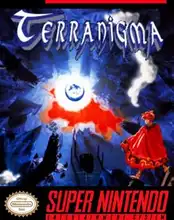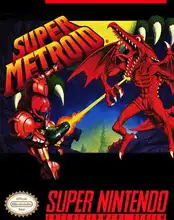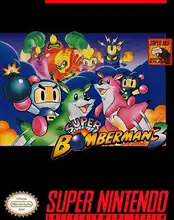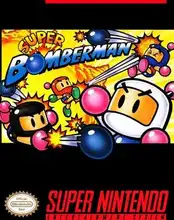Stepping back into the early 1990s, a console arrived that didn't just compete; it defined a generation. The Super Nintendo Entertainment System, or SNES, wasn't just a box under the TV; it was a portal to vibrant worlds, unforgettable characters, and gameplay that set new standards. For many, the mere mention of the SNES conjures up memories of blowing into cartridges, debating which Mode 7 effect was coolest, and arguing whether Link or Mario had the better adventure.
More than thirty years later, the SNES isn't just a relic of the past. It's a touchstone for game design, a source of endless nostalgia, and thanks to modern technology, still accessible to new and old fans alike. But what is it about this 16-bit powerhouse that gives it such incredible staying power?
Why the SNES Still Matters: A Legacy of Innovation
The SNES arrived as Nintendo's answer to the growing challenge from Sega's Genesis. While the Genesis boasted speed, the SNES countered with graphical prowess (hello, Mode 7 and transparency effects!), superior sound capabilities thanks to its dedicated audio chip, and a library of games that pushed boundaries in storytelling, gameplay depth, and artistic design.
It wasn't just about technical specs; it was about the experience. The SNES era saw the refinement of genres and the birth of new paradigms. RPGs became more cinematic, platformers gained layers of complexity, and action-adventure games offered sprawling worlds to explore. This console was a crucible for creativity, and its influence echoes through game development even today.
How to Revisit the Magic: Playing SNES Games Today
Thankfully, you don't need to hunt down a dusty console and potentially failing cartridges to experience the SNES library. Nintendo themselves offer the most direct modern pathway:
- Nintendo Switch Online: A subscription to Nintendo Switch Online gives you access to a curated and growing library of SNES titles via a dedicated application. This service provides modern conveniences like save states (pick up exactly where you left off!), rewind features (undo that tricky jump!), and even online multiplayer for select titles. It's the official, most convenient way to play many classics on current hardware.
- Emulation: The world of emulation allows playing SNES games on various platforms (PC, mobile, etc.). While powerful and flexible, it's essential to stick to legally obtained ROMs (e.g., from cartridges you own) to respect intellectual property.
- Retro Consoles: Devices like the Super NES Classic Edition (if you can find one!) or third-party retro consoles offer pre-loaded libraries and HDMI output for easy connection to modern TVs.
Each method has its pros and cons, but the important thing is that the incredible SNES library remains accessible.
The Games That Defined an Era
While a complete list would take ages, certain SNES titles exemplify the console's impact and showcase its diverse strengths:
- Platformers: Super Mario World set the standard for 2D platforming, introducing Yoshi and incredible level design. Donkey Kong Country dazzled with its pre-rendered graphics.
- RPGs: Final Fantasy VI, Chrono Trigger, and Super Mario RPG proved the SNES was an RPG powerhouse, offering deep stories, complex systems, and memorable characters that resonated globally.
- Action-Adventure: The Legend of Zelda: A Link to the Past is often hailed as one of the greatest games ever made, perfecting the top-down Zelda formula. Super Metroid delivered atmospheric exploration and tight gameplay.
- Fighting Games: Street Fighter II was a cultural phenomenon, and the SNES port brought the arcade experience home for many.
These games weren't just fun; they pushed creative boundaries and established templates still used in game design today.
The SNES Influence Today
Look around the indie game scene, and you'll see the SNES's fingerprints everywhere. Developers are inspired by its pixel art aesthetic, its focus on tight mechanics, its innovative level design, and its ability to tell compelling stories within technical constraints. Many modern retro-style games wear their SNES influence proudly.
The console didn't just entertain millions; it helped shape the very language of video games. Its legacy is a testament to the power of great design, memorable characters, and a commitment to pushing the medium forward.
Frequently Asked Questions About the SNES
What does SNES stand for?
SNES stands for Super Nintendo Entertainment System. In Japan and other regions, it was known as the Super Famicom.
When was the SNES released?
The SNES was first released in Japan in November 1990, followed by North America in August 1991, and Europe in 1992.
How many games were released for the SNES?
Across all regions, over 1,750 games were released for the SNES/Super Famicom.
Can I play SNES games on modern consoles?
Yes, the most common official way is through the Nintendo Switch Online service, which offers a library of SNES games.
More Than Just Nostalgia
The SNES is more than just a fond memory for those who grew up with it. It's a crucial piece of video game history, a console that delivered unparalleled experiences and continues to inspire. Whether you're revisiting classics via Nintendo Switch Online or discovering them for the first time, the magic of the SNES is still very much alive. Its legacy isn't just in the pixels and sound chips, but in the joy and wonder it brought, and continues to bring, to players around the world.
























